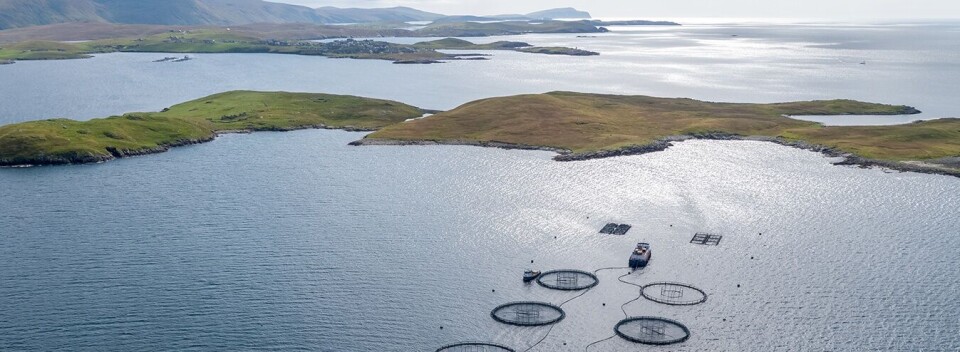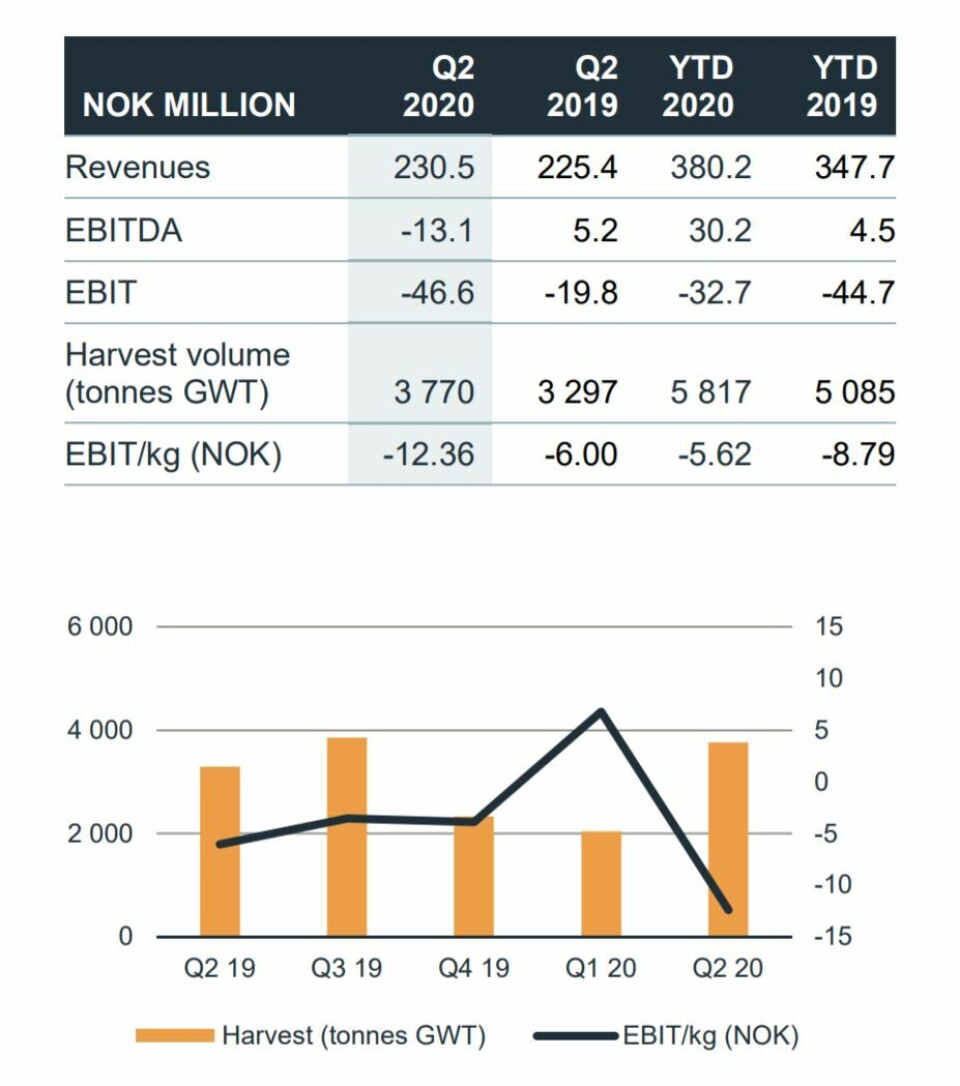
Sea lice levels and low UK prices hurt Grieg Shetland
High sea lice levels and low market prices contributed to losses of NOK 12.36 (£1.06) per kilo for salmon farmer Grieg Seafood Shetland in the second quarter of this year.
Harvest volume was 3,770 tonnes, up 14% compared to Q2 2019, and revenue was NOK 230.5 million, up 2% against the same period in 2019 due to higher volume.
“The increase was offset by low market prices,” said Grieg in its Q2 report today. “The UK market had a significant discount compared to the Norwegian/European market during the quarter.
“In addition, the price achievement was somewhat impacted by a lower superior share of 72% in Q2 2020 compared to 96% in Q2 2019.”

Lower survival rates
The sea lice level in Shetland remained high, with the corresponding intensity in mechanical treatments having a negative impact on survival rates and superior share and driving up cost per kilo.
Grieg also pointed out that cost has remained high during the quarter, due to few synergies between its operations on Shetland isles and Skye.
However, cost per kilo improved significantly from Q2 2019, said Grieg. It expects a harvest of 5,600 tonnes in Q3 2020, with stable cost /kg in Q3 and gradual cost improvements longer term.
Long-term optimism
“The cost per kilo is still significantly above our target, but with increased production and higher harvest volumes, we expect to drive down the cost per kg in the longer term,” added the company.
The Shetland operation’s measures to improve smolt quality, including a new vaccination strategy, were providing positive results, said Grieg, and the survival rates of smolts transferred to sea this sea had increased significantly.
A fire at the Girlsta hatchery during the quarter resulted in the death of 250,000 parr but hasn’t impacted on targeted harvest volume. This has been reduced from 17,000 tonnes to 15,000 tonnes as growth rates have been reduced due to sea lice treatments. Grieg is also delaying some harvesting until 2021 in the expectation of prices improving.
Grieg Shetland’s parent company, Grieg Seafood, saw earnings before interest and tax fall by 99% to NOK 3m in Q2 compared to the same period last year. Read more about it here.






















































